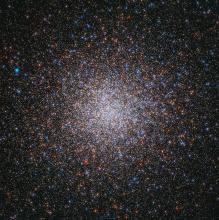Listen to today's episode of StarDate on the web the same day it airs in high-quality streaming audio without any extra ads or announcements. Choose a $8 one-month pass, or listen every day for a year for just $30.
You are here
Escapees
The Pleiades is one of the youngest star clusters in the Sun’s neighborhood. But it’s already falling apart. Many of the stars it was born with have escaped. And many more will follow.
The cluster was born roughly 150 million years ago. A giant cloud of gas and dust collapsed, giving birth to well more than a thousand stars. Astronomers have debated the exact number. In part, that’s because it’s difficult to tell which stars are members of the Pleiades, which are former members, and which just happen to line up in the same direction.
A recent study used observations from the ground and space to try to separate them all. The Gaia space telescope is measuring the positions, motions, and other details of more than a billion stars.
The study identified almost 1300 current members of the cluster. It also found almost three hundred stars that probably have escaped from the Pleiades — pulled away by the gravity of the rest of the galaxy. That means the Pleiades probably was born with about 1600 stars.
And as the cluster orbits the center of the Milky Way Galaxy, even more of its stars will escape — robbing the Pleiades of its luster.
For now, though, it’s in view in the west at sunset. It forms the shoulder of Taurus, the bull, and looks like a tiny dipper. Tonight, it’s well above the bright planet Mercury. But they’ll move closer together over the rest of the month as the Pleiades drops from the evening sky.
More about Mercury tomorrow.
Script by Damond Benningfield



